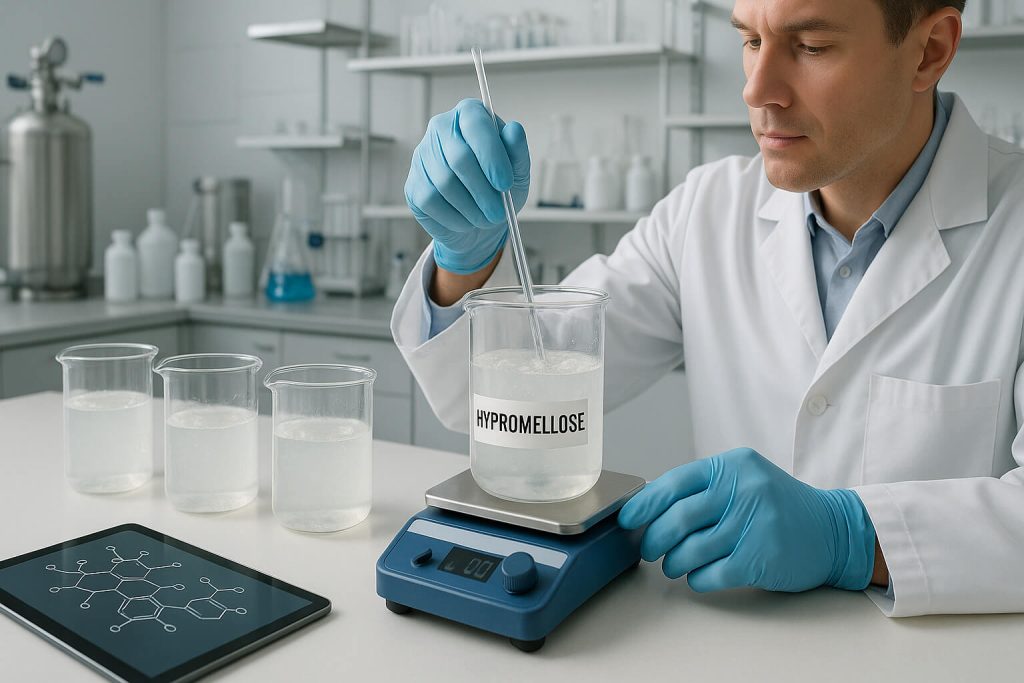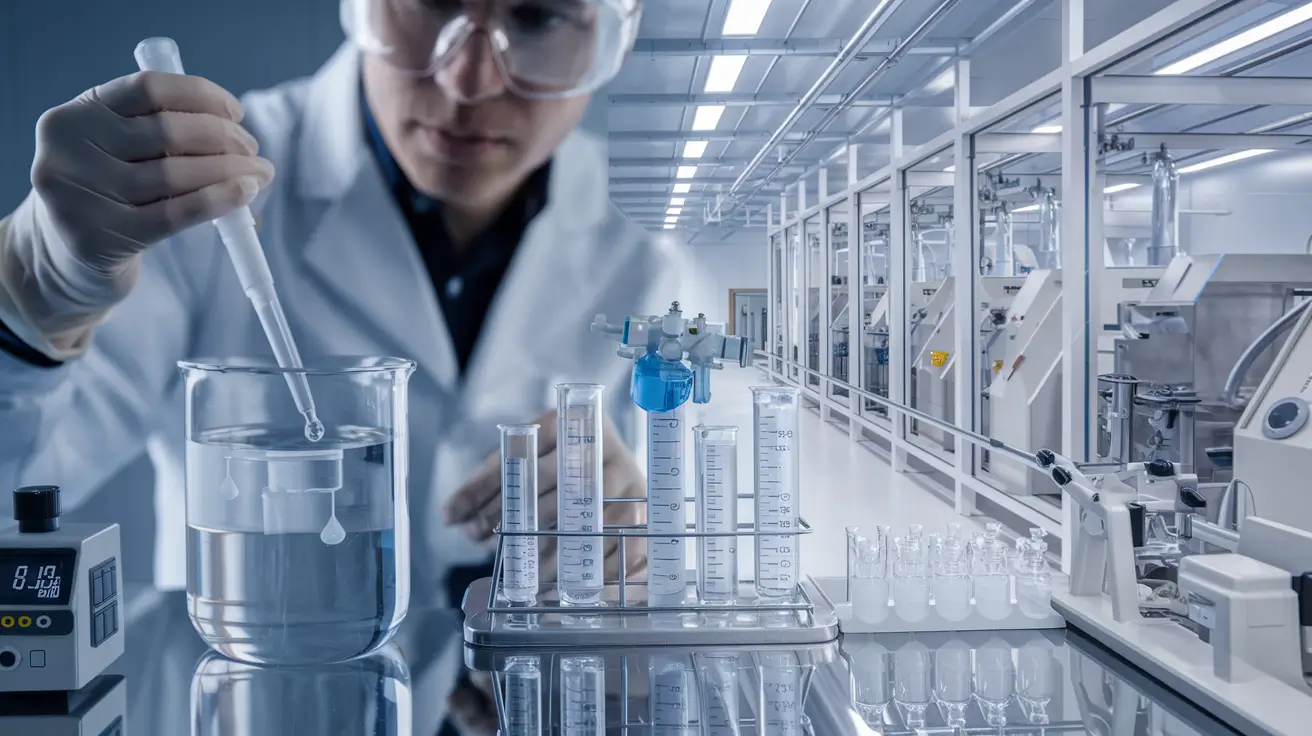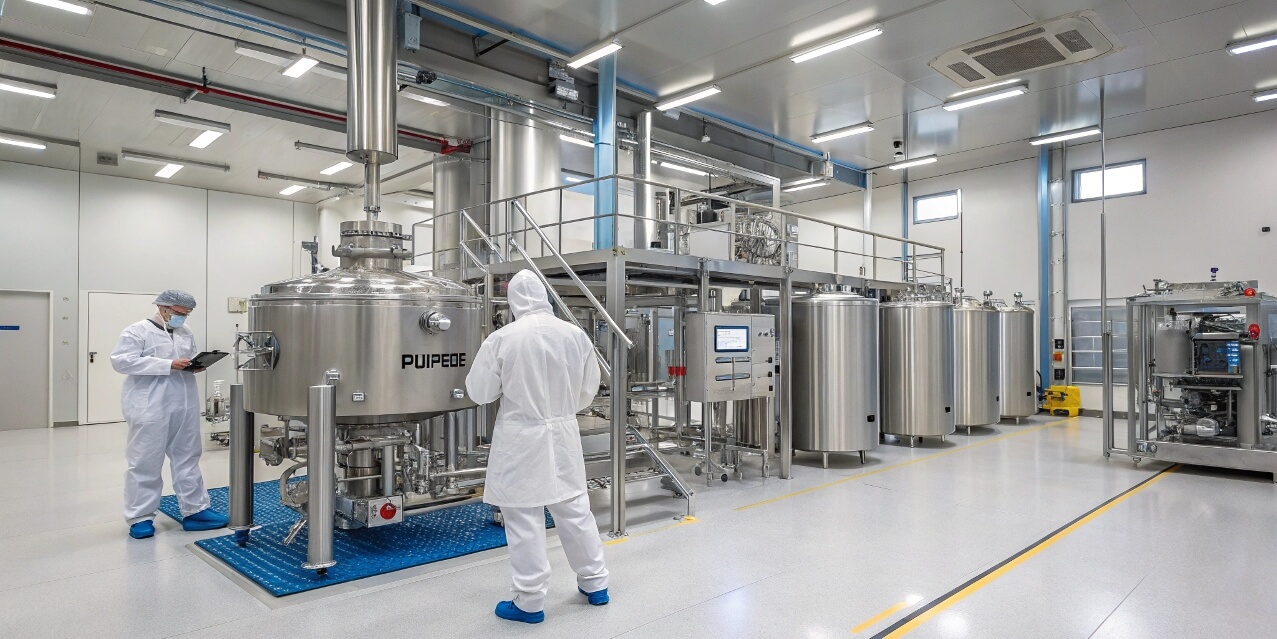Many pharmaceutical and food industry professionals face confusion when encountering both “hydroxypropyl methylcellulose” and “hypromellose” in technical literature, regulatory documents, and supplier catalogs. This terminology inconsistency creates uncertainty about whether these are different materials requiring separate validation processes or identical substances that can be used interchangeably. This article clarifies the relationship between these terms, explains their regulatory status across industries, and provides practical guidance for material selection and substitution. Our team of formulation scientists has worked with these polymers for over 15 years across pharmaceutical, food, and industrial applications.

1.What Are Hydroxypropyl Methylcellulose and Hypromellose?
Hydroxypropyl methylcellulose (HPMC) and hypromellose refer to the same chemical substance—a semi-synthetic, inert polymer derived from cellulose. This versatile material is created through chemical modification of cellulose, a natural polymer found in plant cell walls.
The chemical modification process involves two key steps: first, cellulose fibers undergo treatment with sodium hydroxide to create alkali cellulose; second, this intermediate reacts with methyl chloride and propylene oxide to introduce methoxy and hydroxypropoxy substituent groups onto the cellulose backbone.
Ecco cosa rende tutto questo interessante: The name “hypromellose” was officially adopted as the International Nonproprietary Name (INN) by the World Health Organization to standardize pharmaceutical terminology, while “HPMC” remains common in technical and industrial contexts.
The historical development of this polymer dates back to the 1960s, when researchers sought cellulose derivatives with improved properties for industrial applications. Over time, various naming conventions emerged across different industries and regions, leading to the current dual nomenclature.
| Term | Primary Usage | Regulatory Context | Common Abbreviation |
|---|---|---|---|
| Idrossipropilmetilcellulosa | Technical literature, Industrial applications | Food (E464), Construction | HPMC |
| Hypromellose | Pharmacopeias, Regulatory submissions | Pharmaceutical (USP, Ph.Eur., JP) | None widely used |
| Propylene Glycol Methyl Ether Cellulose | Rarely used alternative name | Historical literature | PGMC |
| Methyl Hydroxypropyl Cellulose | Occasionally in older literature | Historical documents | MHPC |
Regulatory bodies worldwide recognize these materials under various classification systems. In pharmaceuticals, hypromellose appears in the United States Pharmacopeia (USP), European Pharmacopoeia (Ph.Eur.), and Japanese Pharmacopoeia (JP) with specific monographs detailing quality standards. In food applications, it’s designated as food additive E464 in Europe and recognized as GRAS (Generally Recognized As Safe) by the FDA in the United States.
2.How Do the Chemical Properties of HPMC and Hypromellose Compare?
Since hydroxypropyl methylcellulose and hypromellose are identical substances, their chemical properties are the same. However, understanding these properties is essential for proper material selection and application development.
The molecular structure consists of a cellulose backbone with methoxy and hydroxypropoxy substituent groups. These groups replace hydroxyl groups on the anhydroglucose units of cellulose, creating a polymer with modified properties compared to unsubstituted cellulose.
Dovresti sapere che the degree of substitution (DS) and molar substitution (MS) values critically determine the polymer’s behavior in different environments and applications.
The substitution pattern is typically described using a four-digit numbering system, where the first two digits represent the approximate percentage of methoxy groups, and the second two digits indicate the approximate percentage of hydroxypropoxy groups. For example, HPMC 2910 contains approximately 29% methoxy and 10% hydroxypropoxy substitution.
| Tipo di sostituzione | Contenuto di metossile (%) | Hydroxypropoxy Content (%) | Applicazioni comuni |
|---|---|---|---|
| HPMC 2208 | 19-24 | 4-12 | Sustained release pharmaceuticals |
| HPMC 2906 | 27-30 | 4-7.5 | Immediate release coatings |
| HPMC 2910 | 28-30 | 7-12 | Ophthalmic solutions |
| HPMC 1828 | 16.5-20 | 23-32 | Specialty applications |
Viscosity grades represent another critical classification parameter. Manufacturers offer numerous viscosity grades, typically measured in millipascal-seconds (mPa·s) for a 2% aqueous solution at 20°C. These grades range from very low (5 mPa·s) to extremely high (100,000+ mPa·s), allowing formulators to select the appropriate grade for specific applications.
3.What Are the Key Pharmaceutical Applications for These Polymers?
HPMC/hypromellose serves numerous critical functions in pharmaceutical formulations, making it one of the most widely used excipients in the industry.
In tablet coating applications, this polymer creates protective, aesthetic films that mask taste, improve appearance, and sometimes modify drug release. Its film-forming properties produce smooth, uniform coatings with good adhesion to tablet cores. The polymer’s non-ionic nature minimizes interactions with active pharmaceutical ingredients.
La verità è che pharmaceutical formulators value HPMC/hypromellose for its exceptional versatility across multiple functions within a single formulation.
For controlled-release matrix systems, HPMC/hypromellose forms a hydrated gel layer around tablets when exposed to aqueous media. This gel layer controls drug diffusion rates, enabling predictable, extended drug release profiles over periods ranging from several hours to a full day.
| Applicazione | HPMC/Hypromellose Function | Typical Grades Used | Vantaggi principali |
|---|---|---|---|
| Film Coating | Film former | Low viscosity (3-15 mPa·s) | Elegant appearance, moisture protection |
| Controlled Release Matrices | Gel-forming agent | Medium to high viscosity (4,000-100,000 mPa·s) | Predictable drug release, once-daily dosing |
| Soluzioni oftalmiche | Viscosity enhancer | Low to medium viscosity (80-4,000 mPa·s) | Extended contact time, improved lubrication |
| Binder in Wet Granulation | Binding agent | Low viscosity (3-15 mPa·s) | Good cohesion, appropriate hardness |
| Capsule Manufacturing | Gelling agent | Various grades | Vegetarian alternative to gelatin |
Ophthalmic solutions benefit from HPMC/hypromellose’s unique properties as a viscosity enhancer and lubricant. In artificial tear formulations, it mimics natural tear film components, providing extended relief for dry eye conditions.
In capsule manufacturing, HPMC/hypromellose serves as a vegetarian alternative to gelatin, addressing religious, cultural, and dietary preferences. HPMC capsules offer advantages including lower moisture content, reduced cross-linking potential, and stability across a wider humidity range compared to gelatin capsules.
4.How Are These Polymers Used in Food and Consumer Products?
Beyond pharmaceuticals, HPMC/hypromellose plays important roles in food, personal care, and construction applications, demonstrating its remarkable versatility.
In food applications, this polymer functions as a thickener, stabilizer, and emulsifier. It carries the designation E464 in European food regulations and is considered GRAS (Generally Recognized As Safe) by the FDA in the United States.
Ciò che devi capire è food manufacturers must select grades specifically produced and certified for food use, as pharmaceutical or technical grades may not meet food safety requirements.
Plant-based meat alternatives frequently incorporate HPMC/hypromellose to improve texture and binding properties. Its thermal gelation characteristics help create products that mimic the mouthfeel and cooking behavior of animal proteins.
| Industria | Applicazione | Funzione | Key Properties Utilized |
|---|---|---|---|
| Cibo | Prodotti da forno | Ritenzione di umidità | Water binding capacity |
| Cibo | Plant-based proteins | Modificatore di texture | Gelificazione termica |
| Cura della persona | Shampoo e lozioni | Addensante | Controllo della viscosità |
| Costruzione | Tile adhesives | Ritenzione idrica | Delayed water release |
| Costruzione | Plasters and mortars | Miglioratore di lavorabilità | Rheology modification |
Personal care and cosmetic products utilize HPMC/hypromellose as a thickener and film-former. In shampoos and body washes, it provides appropriate viscosity without excessive stickiness. In lotions and creams, it enhances texture and stability.
The building materials and construction industry represents another major application area. In tile adhesives, renders, and mortars, HPMC/hypromellose provides excellent water retention, preventing premature drying and ensuring proper cement hydration.
5.What Technical Considerations Impact Selection Between These Materials?
Since hydroxypropyl methylcellulose and hypromellose are chemically identical, selection decisions focus on grade characteristics rather than choosing between different substances.
Performance differences between specific grades stem from variations in substitution pattern, viscosity, and particle size. Higher methoxy content typically provides better organic solvent solubility, while higher hydroxypropoxy content enhances water solubility.
Voglio essere chiaro su questo punto: While the terms may be used interchangeably, the specific grade parameters must be carefully matched when substituting between suppliers or when referenced under different names.
Cost and supply chain considerations influence material selection decisions. Pricing varies based on grade, with higher viscosity and specialized grades typically commanding premium prices.
| Fattore di selezione | Considerazione | Impatto sulle prestazioni | Metodo di valutazione |
|---|---|---|---|
| Modello di sostituzione | Methoxy/hydroxypropoxy ratio | Solubilità, gelificazione termica | Supplier specifications |
| Grado di viscosità | mPa·s in 2% solution | Release rate, texture, binding strength | Application testing |
| Dimensione delle particelle | Fine, medium, coarse | Hydration rate, dust generation | Flow and dissolution testing |
| Stato normativo | Pharmacopeial compliance | Market access, documentation | Supplier certification |
| Affidabilità del fornitore | Manufacturing consistency | Batch-to-batch performance | Supplier audit, history |
Processing requirements vary by grade and application. Fine particle grades hydrate more rapidly but may create dust issues during handling. Coarser grades offer improved flow but require longer hydration times.
Equipment compatibility must be evaluated when selecting grades. High-viscosity grades may require more robust mixing equipment and longer processing times. Low-viscosity grades might necessitate careful addition techniques to prevent lumping.
6.How Do Regulatory Bodies View These Materials?
Regulatory bodies worldwide recognize hydroxypropyl methylcellulose and hypromellose as the same substance, though terminology varies across different regulatory frameworks.
The FDA classifies this polymer as a generally recognized as safe (GRAS) food additive and an inactive pharmaceutical ingredient. For drug applications, it appears in the Inactive Ingredient Database with specified maximum potency levels for various dosage forms.
Scommetto che non lo sapevi that despite being chemically identical, documentation requirements can differ depending on which term is used in regulatory submissions, with “hypromellose” generally requiring reference to specific pharmacopeial standards.
The European regulatory framework designates this polymer as E464 for food applications, with specific purity criteria outlined in Commission Regulation (EU) No 231/2012. For pharmaceutical use, the European Pharmacopoeia includes a monograph for “Hypromellose” with detailed specifications.
| Ente regolatore | Preferred Terminology | Key Regulations/Standards | Requisiti di documentazione |
|---|---|---|---|
| FDA (US) | Hypromellose (pharmaceuticals), HPMC (food) | 21 CFR 172.874, USP monograph | DMF reference, CoA, USP compliance |
| EMA (Europe) | Hypromellose | Ph.Eur. monograph, Regulation (EU) No 231/2012 | CEP, CoA, Ph.Eur. compliance |
| PMDA (Japan) | Hypromellose | JP monograph | JP compliance documentation |
| CFDA (China) | Idrossipropilmetilcellulosa | ChP monograph | Import registration, ChP compliance |
| FSSAI (India) | HPMC (E464) | Food Additives Regulations | Food grade certification |
International Pharmacopeia monographs exist in the United States Pharmacopeia (USP), European Pharmacopoeia (Ph.Eur.), Japanese Pharmacopoeia (JP), and other national compendia. These monographs specify identification tests, purity requirements, and functional property evaluations.
7.What Future Developments Are Expected for These Materials?
The future of HPMC/hypromellose involves both expanding applications and evolving manufacturing technologies to meet changing market demands.
Emerging applications in novel drug delivery systems represent a significant growth area. Research into 3D-printed pharmaceuticals frequently utilizes HPMC/hypromellose as a primary matrix material due to its excellent printability and controlled-release properties.
La conclusione è ongoing research continues to find new applications for this versatile polymer, even after decades of commercial use.
Sustainable sourcing and manufacturing innovations address growing environmental concerns. Manufacturers are developing processes that reduce solvent use, decrease energy consumption, and minimize waste generation.
| Future Development | Stato attuale | Impatto potenziale | Timeline |
|---|---|---|---|
| 3D-Printed Pharmaceuticals | Research/early commercialization | Personalized medicine advancement | 2-5 years |
| Sustainable Manufacturing | Process optimization ongoing | Riduzione dell'impatto ambientale | 1-3 years |
| Modified Grades | Research and development | Enhanced functionality for specific applications | 3-7 years |
| Combination Products | Early research | Synergistic performance with other polymers | 5-10 years |
| Regulatory Harmonization | Ongoing discussions | Simplified global compliance | 3-8 years |
Modified grades with enhanced functionalities continue to emerge. These include grades with improved thermal stability, faster hydration kinetics, or specialized substitution patterns optimized for specific applications.
Market trends indicate steady growth across pharmaceutical, food, and construction applications. Increasing demand for vegetarian alternatives to gelatin in pharmaceuticals and food drives growth in capsule and food applications.
Conclusione
Hydroxypropyl methylcellulose and hypromellose are indeed the same chemical substance, with the terminology difference stemming from regulatory conventions rather than any material distinction. This versatile polymer serves critical functions across pharmaceutical, food, personal care, and construction applications due to its unique combination of properties.
For formulators and purchasing professionals, understanding that these terms refer to the same material eliminates unnecessary confusion and prevents duplicate validation efforts. However, careful attention to specific grade parameters—including substitution pattern, viscosity, and particle size—remains essential when selecting materials or changing suppliers.
The continued evolution of this polymer through modified grades, sustainable manufacturing, and novel applications ensures its relevance for decades to come. Its exceptional safety profile, functional versatility, and broad regulatory acceptance make it a cornerstone excipient across multiple industries.
For assistance selecting the optimal HPMC/hypromellose grade for your specific application, contact our technical team. Our formulation scientists can help navigate grade selection, regulatory requirements, and processing considerations to optimize your product performance.
Sezione FAQ
Q1: Can hydroxypropyl methylcellulose and hypromellose be used interchangeably in pharmaceutical formulations?
Hydroxypropyl methylcellulose and hypromellose can generally be used interchangeably in pharmaceutical formulations, as they are chemically identical substances. However, formulators must verify the specific grade, viscosity, and substitution pattern match their requirements. When switching between suppliers, bioequivalence testing may be necessary for certain critical applications like modified-release systems. Always consult pharmacopeial standards and regulatory guidelines when making substitutions, as minor manufacturing differences between suppliers can sometimes affect performance in sensitive applications.
Q2: What are the key differences between HPMC and hypromellose in food applications?
In food applications, there are no fundamental differences between HPMC and hypromellose as they are the same chemical entity. Both are listed under the food additive code E464. However, food-grade materials may have different specifications compared to pharmaceutical grades, including purity requirements, heavy metal limits, and microbiological standards. Food manufacturers should verify that the specific grade they select meets regional regulatory requirements and possesses the appropriate functional properties (viscosity, thermal gelation temperature) for their specific application.
Q3: Why do some industries prefer the term “hypromellose” while others use “HPMC”?
The preference for “hypromellose” versus “HPMC” largely stems from regulatory and industry conventions. The pharmaceutical industry, particularly in official pharmacopeial documents, adopted “hypromellose” as the International Nonproprietary Name (INN) to standardize terminology globally. Meanwhile, “HPMC” remains common in food, construction, and industrial applications due to its brevity and historical usage. Technical literature often uses both terms, with “HPMC” frequently appearing in research papers and “hypromellose” in regulatory submissions. This dual nomenclature reflects different industry traditions rather than any chemical distinction.
Q4: How do I determine the correct grade of HPMC/hypromellose for my application?
Determining the correct grade of HPMC/hypromellose requires evaluating several key parameters: First, identify the required viscosity range for your application, as grades range from very low (5 mPa·s) to extremely high (100,000+ mPa·s). Second, consider the substitution type needed (e.g., 2208, 2910), which affects properties like thermal gelation and hydration rate. Third, assess particle size requirements, which impact dissolution rate and processing behavior. Finally, review regulatory requirements for your specific application and region. Consulting with suppliers and conducting small-scale trials with multiple grades is highly recommended to optimize performance before full-scale implementation.
Q5: What quality standards should I look for when sourcing HPMC or hypromellose?
When sourcing HPMC or hypromellose, look for materials that meet relevant pharmacopeial standards (USP, Ph.Eur., JP) for pharmaceutical applications or food regulations (FDA, EFSA) for food uses. Quality certificates should verify substitution type, viscosity within specified ranges, and compliance with limits for residual solvents, heavy metals, and microbial contamination. For critical applications, request additional testing data on batch-to-batch consistency, detailed substitution pattern analysis, and thermal gelation properties. Supplier audits or quality agreements are recommended for ongoing supply relationships, and stability data should confirm the material maintains its properties throughout the claimed shelf life.




